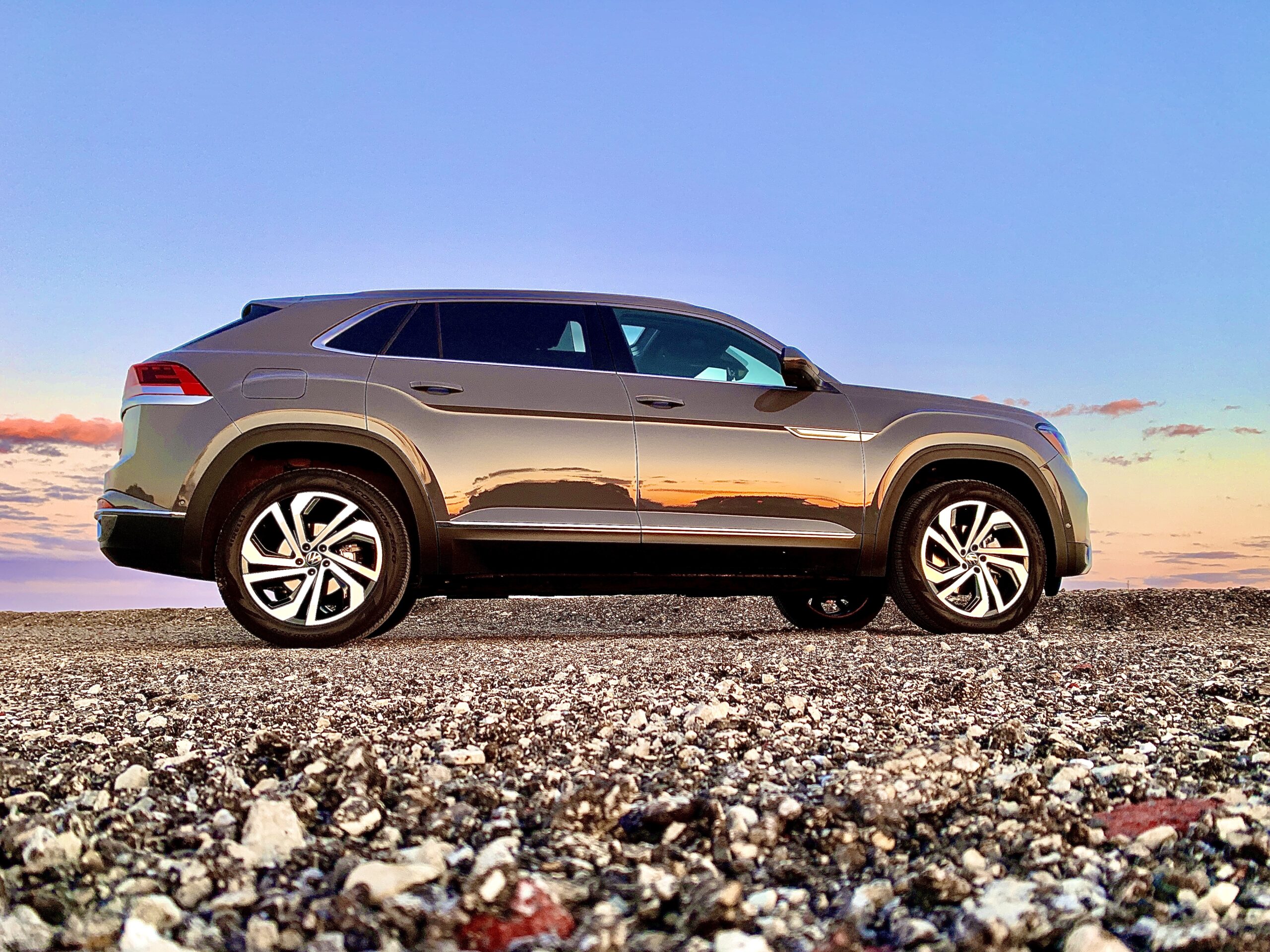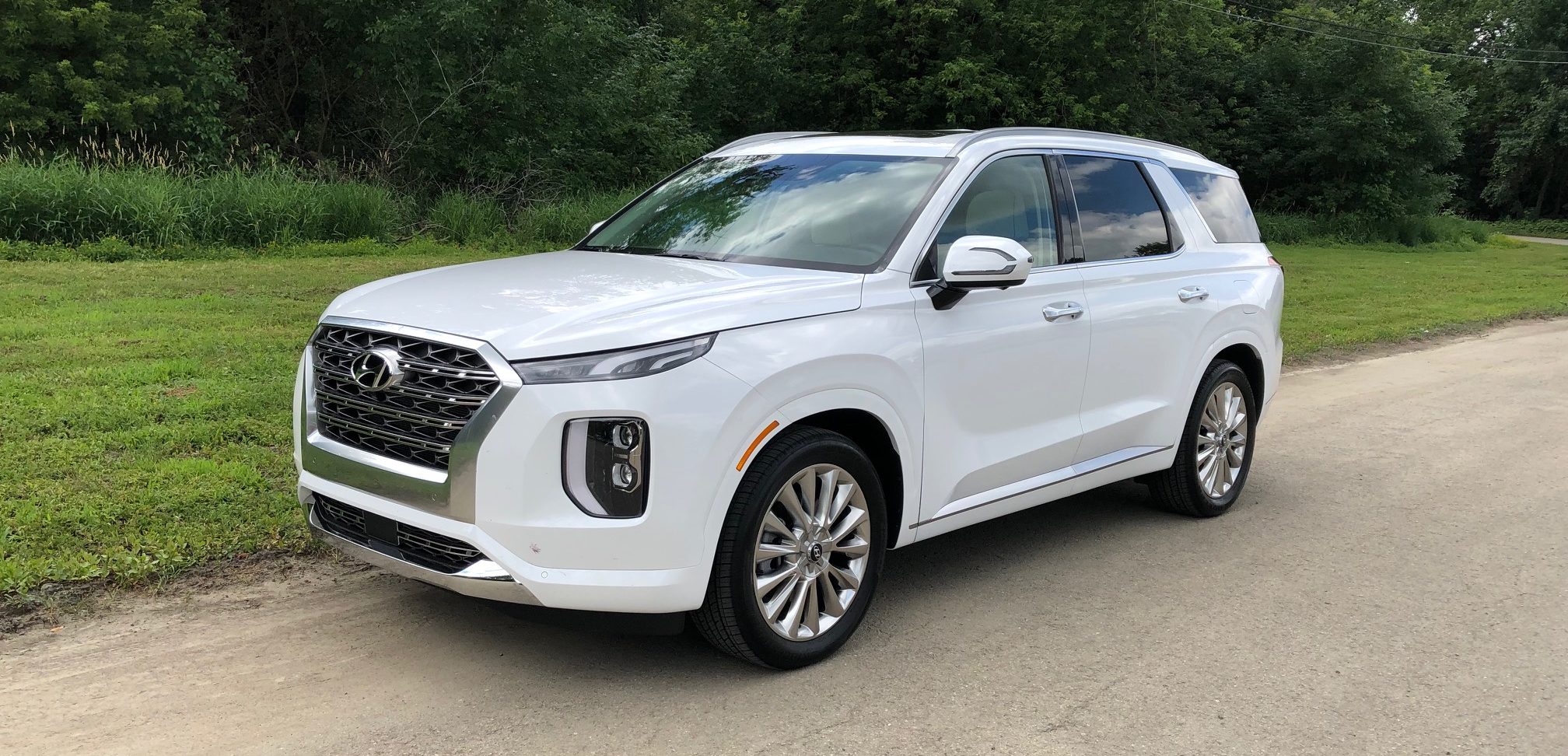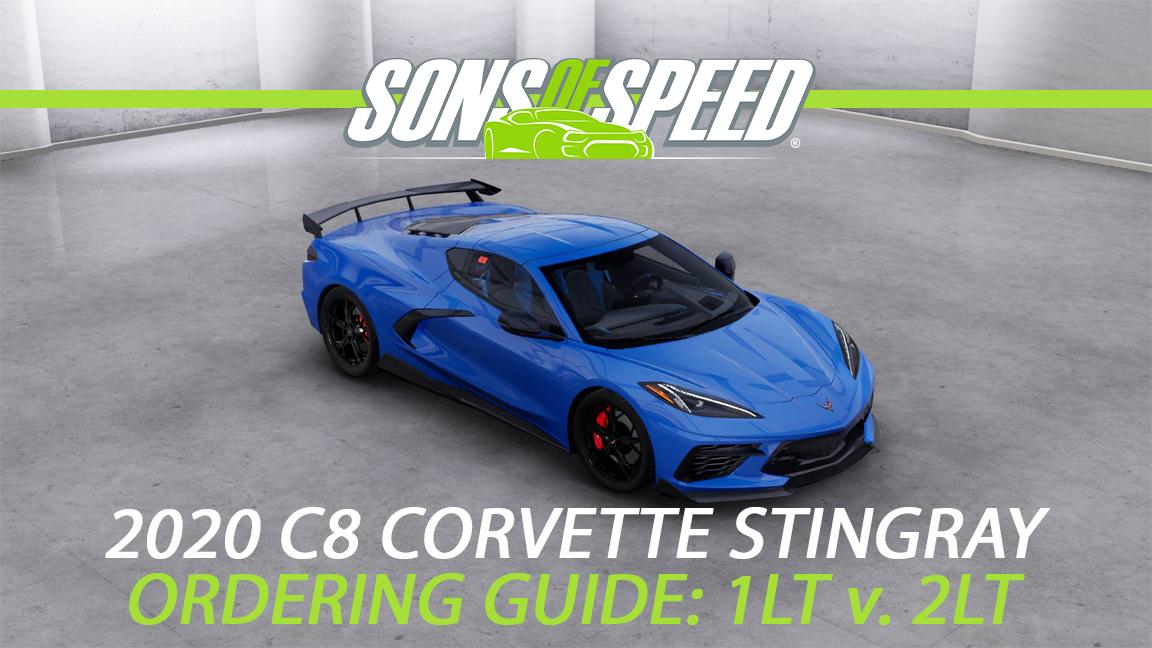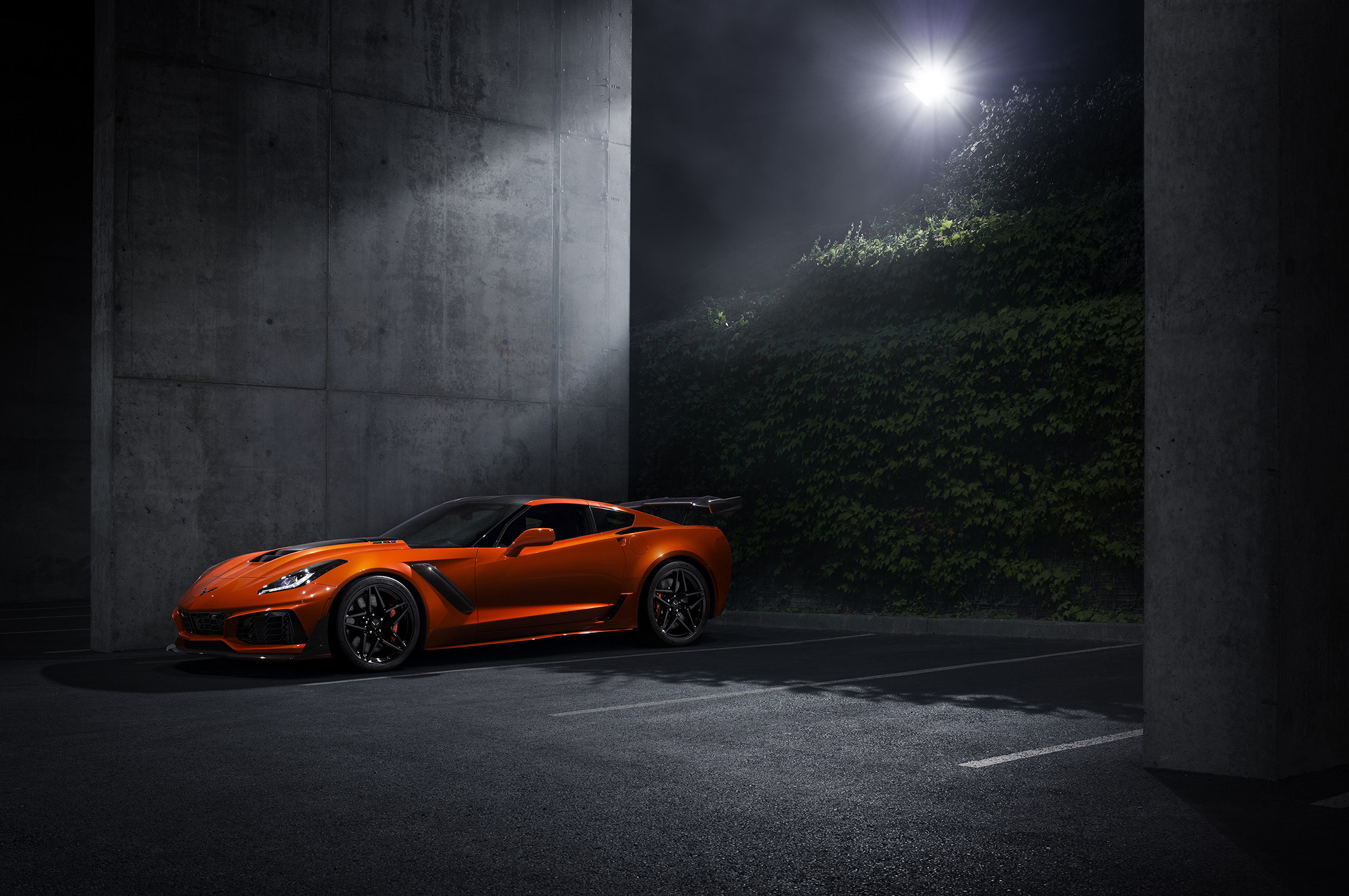
Chevrolet Sends the Front-Engined Vette Out with a Bang
Chevy officially confirmed its 2nd worst-kept Corvette secret yesterday as it announced that come next spring, a 7th-generation ZR1 will be born. While some details were leaked earlier this week, today’s release confirms – and in some cases surpasses – what we originally thought we knew about the new ZR1.
First, the power made by the blown LT5 is 755hp (not 750hp as leaked), making it an even 300 more horses than the base LT1. Second, actual torque rating comes in much higher than previously believed: the LT5 will churn out 715 foot pounds (not 680 as thought) at a relatively high 4400 RPMs, but the Vette team claims a broad and flat torque curve not unlike its current C7 engine lineup.
And while these huge numbers are certainly a large part of the story, that big air foil hanging out the back of the ZR1 brings us to the other story here: air, or more specifically moving and using air to make this the best Corvette yet. Starting at the front of the car, almost everything below the iconic twin-flag emblem is grille – 3 separate but huge sections swallow enough air to make a Hoover blush. Also stuffed in that Corvette’s nose? A host of larger and additional radiators and heat exchangers (totaling 13 over the Z06’s 9) to keep temps down as the ZR1 attacks a racetrack or goes for a top speed run. In the C7 tradition, air is also purposefully routed to various engine, trans, differential and brake coolers, as well as over the car to one of two rear wing styles. We’ll have to see if all these changes succeeded in squelching the persistent complaints of Z06’s overheating on track days.

Chevy spent a lot of time in the wind tunnel developing the two packages. On the basic aero package, a smaller (but still raised) rear wing allows for less downforce to help achieve a 210+ mph top speed. The enhanced ZTK performance package adds the Cessna-sized wing said to produce 950 lbs of downforce. But no matter which package you choose, all ZR1s get a Chevrolet-first, down force-enhancing front underwing. Both rear wings are not simply bolted to the rear hatch but are instead tied to the chassis, just like the famous Dodge Daytona and Plymouth Roadrunners of the late 1960s/early 1970s. With this much added down force, we can’t wait to see the lateral acceleration numbers as the Z06’s were already off the chart. While the rear wing is going to be the “love it” or “hate it” proposition of this car, we’re predicting the tacky rear “ZR1” badge-delete will be the first mod owners do.
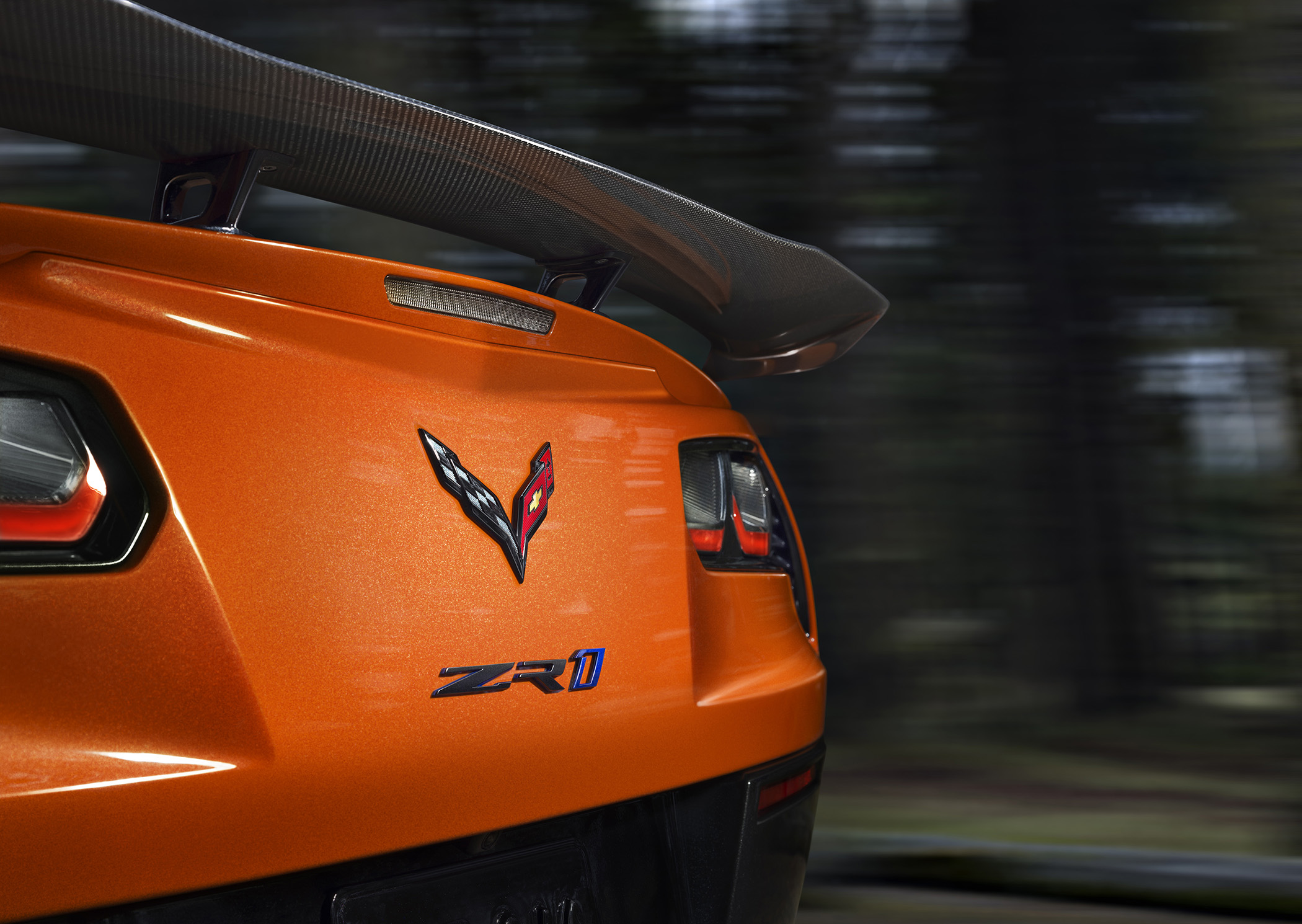
The ZR1 gets 1/2” wider wheels up front over the Z06 and Grand Sport (at 10.5 inches wide), but yet, the ZR1 will wear the same exact tires found on its widebody brothers, meaning that the front tires will be stretched to its new rim size. Tires are 285/30ZR19 in front and 335/25ZR20’s out back, either in Michelin’s Pilot Super Sports or Cup2 tires. What the ZR1 doesn’t share with either the GS or Z06 are the front wheel arch spats that bolted on to easily (read:cheaply) widen the front stance of the car without stamping new plastic. The wider front wheel may also exacerbate a recurring problem with the widebody C7’s – wheel bends. Current Z06 and Grand Sport owners complain at a significant rate of wheels going out of round for little-to-no reason, and one potential culprit is the increased distance from the hub to the edge of the wheel coupled with their cast construction. Chevy better have strengthened the ZR1 wheels to prevent bending, or else it will have a lot of unhappy, 6-figure owners.
Also carrying over are the transmissions from the C7 lineup – either a do-it-yourself 7-speed manual or a first-for-ZR1 8-speed automatic transmission. It is a bit surprising Chevy didn’t opt for the ZL1’s new and excellent 10-speed automatic transmission, but we’re guessing space, weight or the ability to handle the LT5 are some likely reasons for the 8-speed remaining.
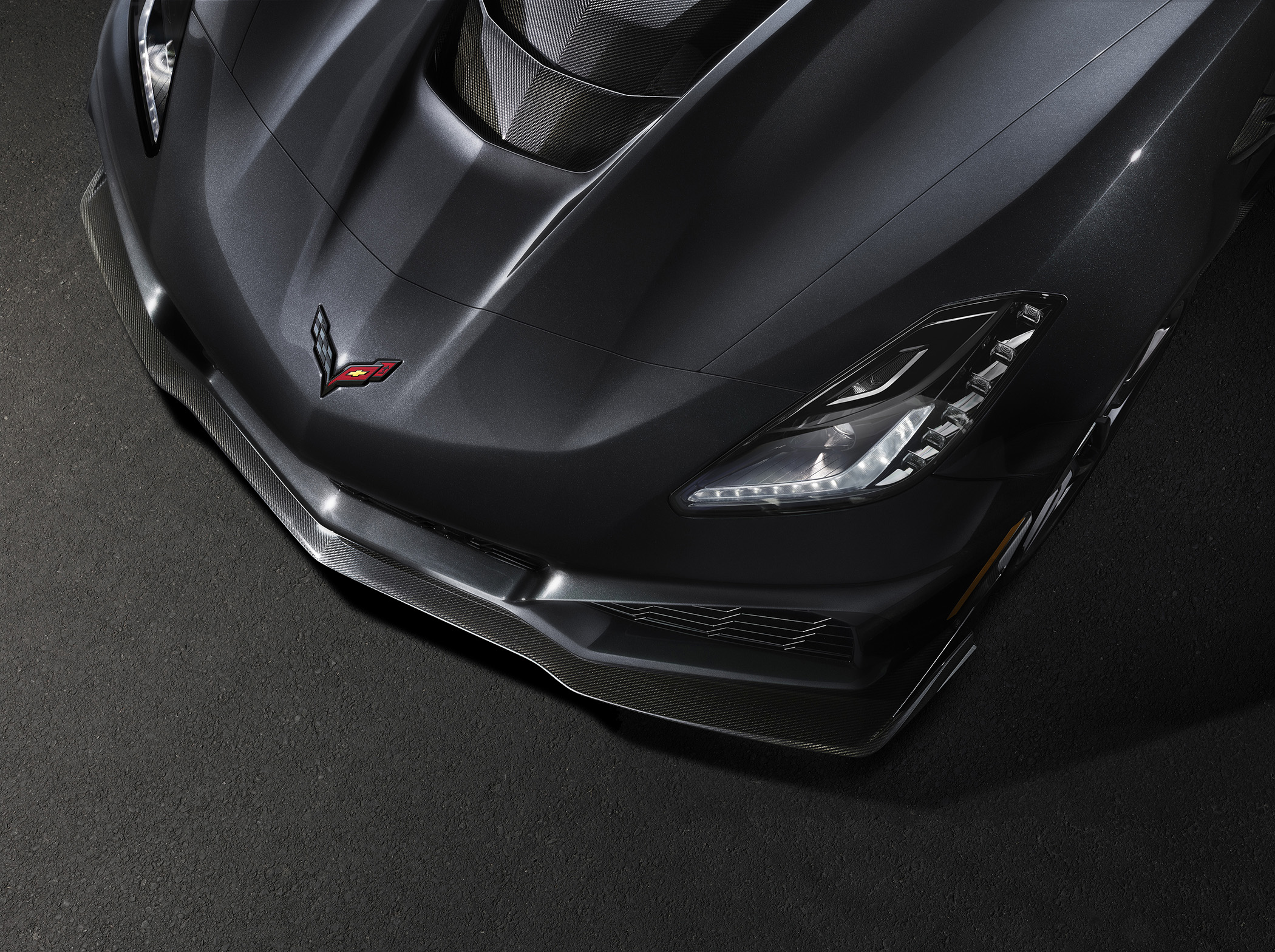
Chevy spent a lot of time in the wind tunnel developing the two packages. On the basic aero package, a smaller (but still raised) rear wing allows for less downforce to help achieve a 210+ mph top speed. The enhanced ZTK performance package adds the Cessna-sized wing said to produce 950 lbs of downforce. But no matter which package you choose, all ZR1s get a Chevrolet-first, down force-enhancing front underwing. Both rear wings are not simply bolted to the rear hatch but are instead tied to the chassis, just like the famous Dodge Daytona and Plymouth Roadrunners of the late 1960s/early 1970s. With this much added down force, we can’t wait to see the lateral acceleration numbers as the Z06’s were already off the chart. While the rear
we’re guessing space, weight or the ability to handle the LT5 are some likely reasons for the 8-speed remaining.
On the inside, Chevy showed off a quite unappealing gold-ish aluminum trim package (think weathered C3PO) which we’d skip, but we do like the orange stitching to match the new and wild Sebring Orange, which suits this car perfectly.
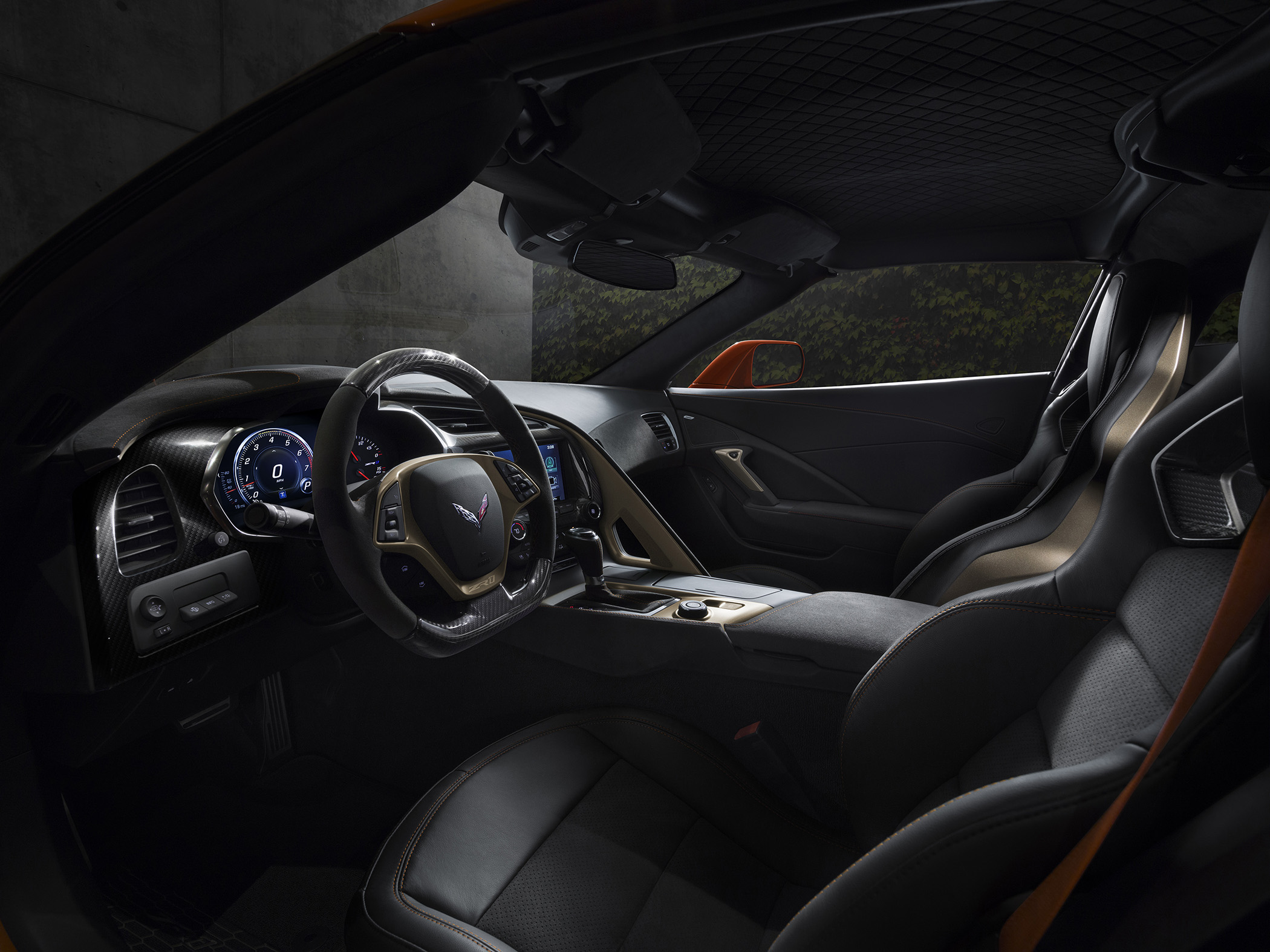
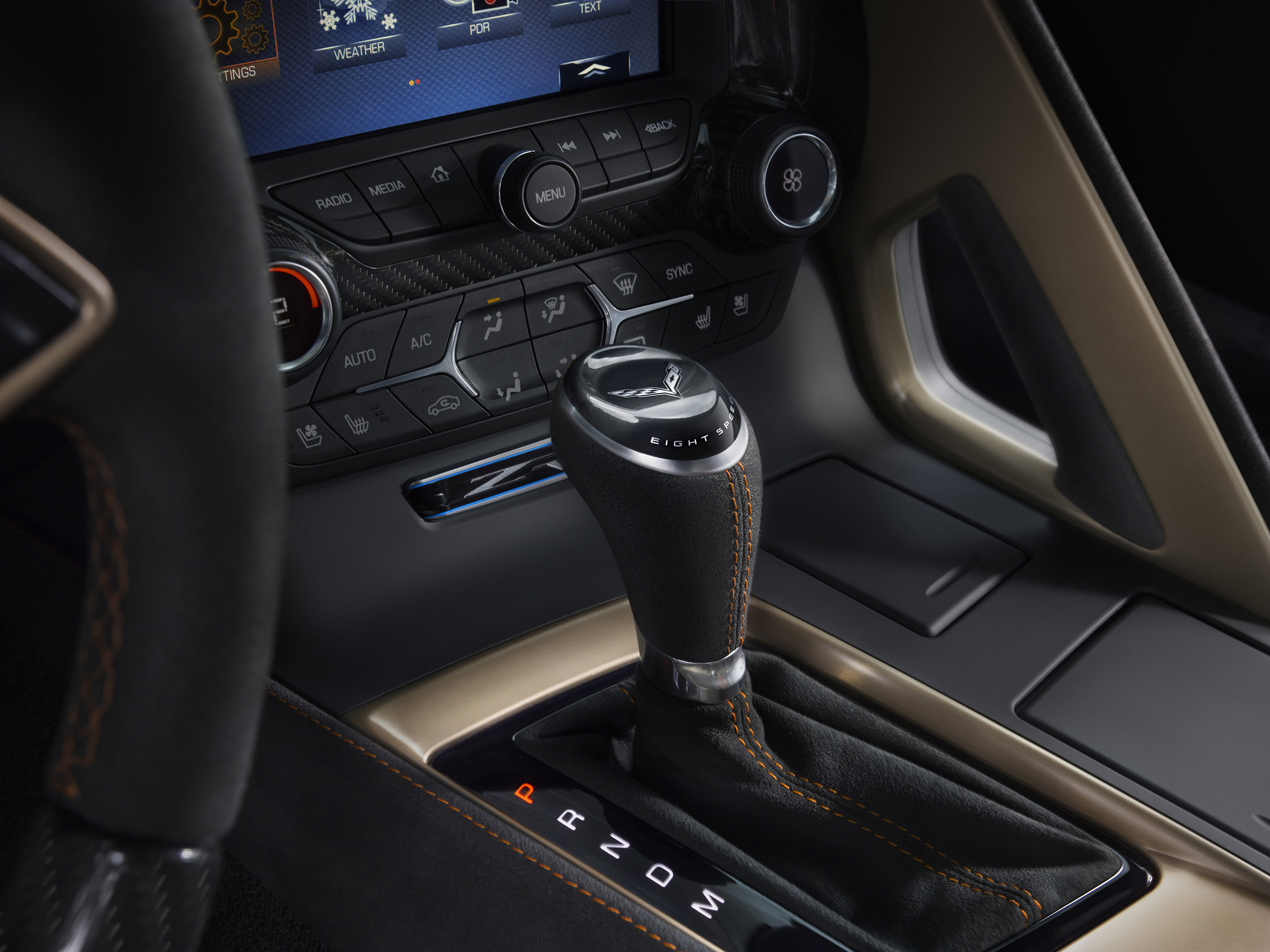
With Chevy previously shortening the 2018 model year and starting 2019 production in January, Chevy is clearly sending the front-engined Corvette out with its loudest bang yet. We get the feeling the ZR1 will be around for probably 2 years before the C8 makes its debut, unless Chevy plans on building the two cars side-by-side. In that case, we might see a C8 coming as early as next year.
Pricing has not yet been announced, but the ZR1 is scheduled to hit showrooms in the spring, so get those deposits in now!
Updated 11/28/2017
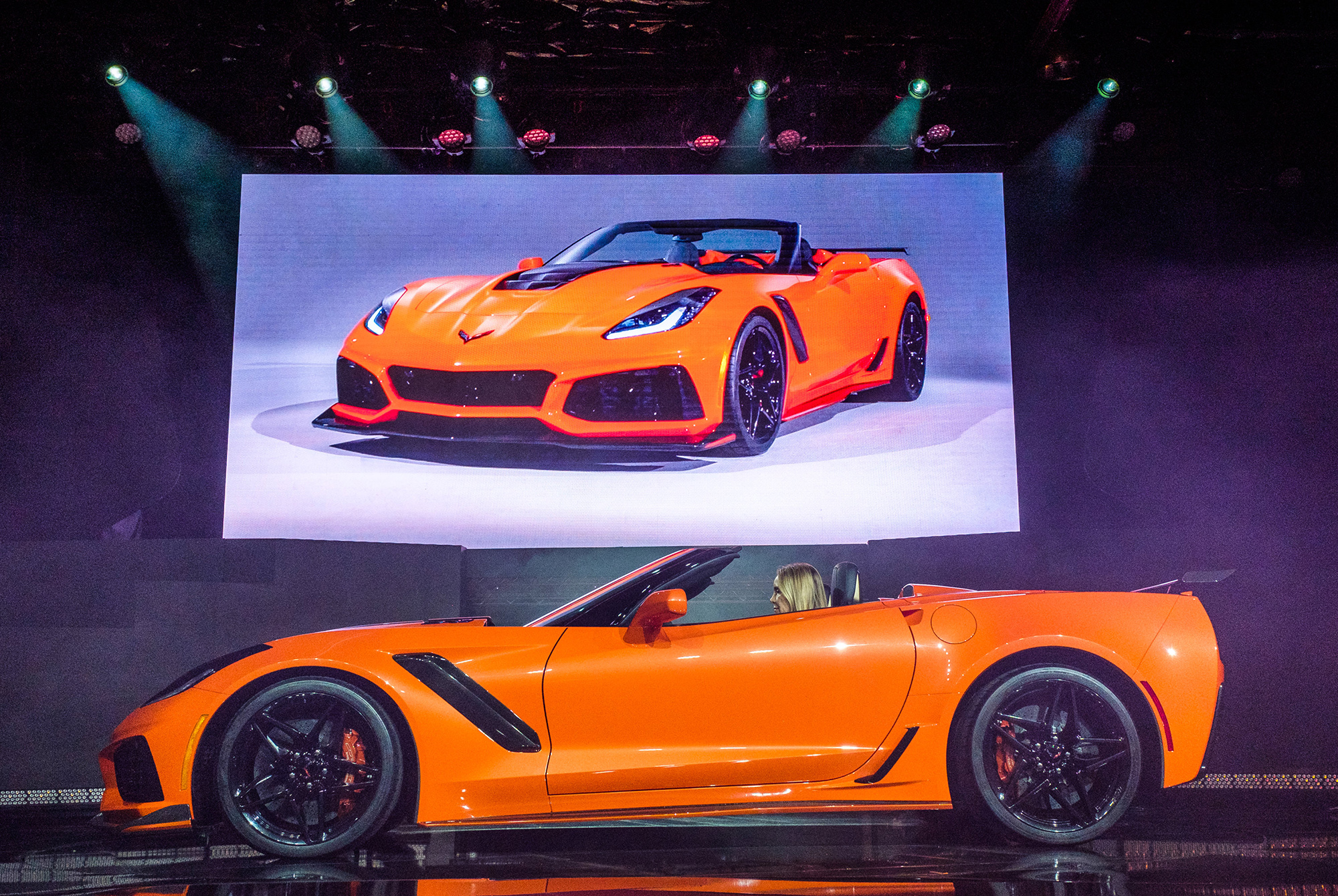
As expected, Chevy debuted the ZR1 convertible at the LA Auto Show tonight while it also released pricing and a few more details. The ZR1 coupe will carry a suggested retail price of $119,995, while the ZR1 convertible will start at $123,995 (prices include destination charge, but exclude tax, title and other dealer fees).
The strength of the Corvette’s aluminum chassis means the only structural changes in the convertible are accommodations for the folding top and re-positioned safety belt mounts. The power top can be operated remotely or while driving up to 30 mph. In fact, the curb weight difference between the ZR1 coupe and convertible is less than 60 pounds (27 kg), with most of the difference attributed to the folding top hardware.
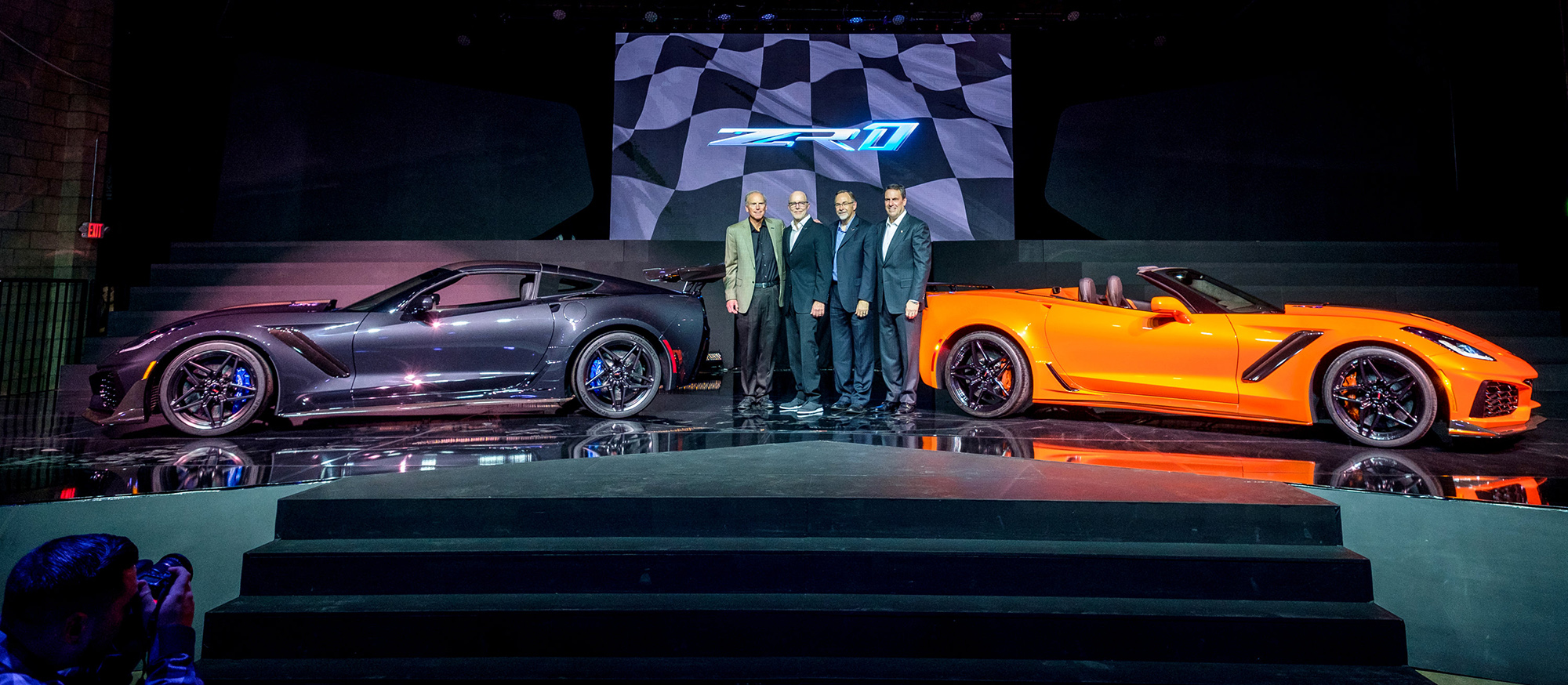
Chevy also released some more specific performance numbers as well. The coupe with its basic aero package can hit 212-mph, and even with the big wing from the ZTK package or in convertible form, the ZR1 will still exceed 200-mph. 60 mph will blow by in less than 3 seconds, with the quarter-mile becoming history in less than 10.
One last thing the Corvette team discussed was the ZR1’s range of exhaust notes. Currently, all C7s can go from a “stealth” mode of quiet exhaust (the inner two of the C7s four pipes) to a loud “track” setting that opens two bypass valves on the outer two pipes. Instead of two settings, the ZR1 also employs spring-loaded passive valves to achieve four distinct exhaust-note settings that range from a quieter-than-a-Z06 stealth mode to a significantly louder-than-a-Z06 track mode. We already know from watching the ZR1 test cars running the Nürburgring that track mode exceeds acceptable track noise levels there (hence those weird tail pipe extensions we saw on the spy videos), so the ZR1’s tune should be music to a car-nuts ears.
